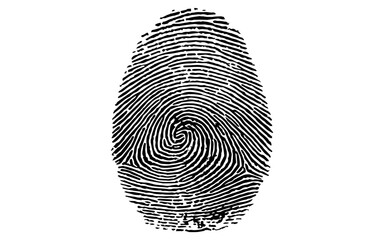Adults shown as minors with AI recognition in 2025
airis:protect, the ultra-high-definition artificial intelligence solution quantifies and qualifies objects in real time and has a brand new feature – the AI RECOGNITION OF ADULTS SHOWN AS MINORS. Let’s support you with our legendary Video and Image moderation solution. Protect your business and expand your income with us.
Recognizing real children in photos compared to adults dressed as children (e.g., in children’s outfits or with props) can be tricky – especially if there was a deliberate attempt to make the adults look childlike. However, there are some typical features by which real children can usually be recognized and a “technological recognition of children on the body”.
Yes, children can be recognized by the body – but this is a complex task from a technical and ethical point of view. It depends a lot on which physical characteristics are analyzed and which technology is used.
✅ What does “recognizing of the body” mean?
Is it possible to distinguish a child from an adult without facial recognition, i.e. solely on the basis of physical characteristics – e.g. in pictures or videos.
Yes, this is possible in principle – via: Physical characteristics, Behavior and expression and also via Clothing & Props
First you’ve got the size. Children are smaller – can be measured relative to environment. Then Head-to-body ratio as children have proportionally larger heads. Also the body proportions with smaller limbs, shorter hull and different posture or movement patterns. Gait pattern or movement is an issue as children often move uncoordinated or with shorter steps. A next point is the Head-to-body ratio. Here you check that children have a larger head compared to the body and in adults, the head is proportionally smaller than the rest of the body. The Facial proportions. Children have larger eyes in relation to their faces and smaller noses, softer facial features and less pronounced jaw lines and no wrinkles. Hands and feet – Children’s hands are rounder, with shorter fingers and adults have elongated, more defined hands. Next is the Physique & Posture. Children often move uncoordinated or “unpolished”. Adults can try to appear childlike, but muscle tone, posture and movement sequences often betray them.
Mime is another point as children show emotions very directly and unadulterated. Adults often imitate children’s facial expressions in an exaggerated or feigned way. Also shown in the Gaze & Body Language. Here children often look into the camera naively, curiously or unconsciously and Adults, even when disguised, usually show more conscious control. Also Fit – Clothing that is too tight or too loose on a “child” can be an indication that it is an adult and for sure Details such as wigs, false braids or pigtails, unnatural makeup, or costumes can also indicate disguise.
✅ How do you recognize children in particular?
There are two ways of doing that via check either the characteristics like size in relation to the environment, body proportions, gait or movement behavior and face age detection or the procedure, so person detection, feature extraction (size, proportions, clothing, etc.), classification with child vs. Adult and optional the facial analysis for age estimation (e.g. age < 14 = child).
✅ How can this be recognized technically?
With computer vision thru AI solutions like airis:protect. That means recognizing a person and analyze the bounding box with height/width and the position in the image (possibly in comparison to objects such as doors, tables). Additionally checking of posture & proportions, such as arm to leg length ratio and angle of the limbs. Then classification is done and “child” vs. “adult” based on these characteristics.
Example: If a person in the picture is 1.20 m tall and the head is 1/4 of the height of the body, he could be a child.
The technological assistance is also filled by the AI-powered image analysis (as in deepfake detection) and the forensic image analysis: analysis of proportions, metadata, shadows and others.
Deepfake detection of adults who are supposed to look like children is a very specialized, but increasingly relevant topic – especially in the context of counterfeit detection, youth protection and forensic analysis.
Here are the most important technical and visual clues to expose deepfakes or manipulated images/videos in which adults are supposed to appear as children:
✅ What are the technical identifiers (deepfake)?
Well here you should check the facial distortions or inconsistencies. That includes unnatural transitions on the neck, hairline, or ears. Blurred areas around the mouth, eyes, or teeth. Irregular pupil reflections (e.g. light reflections illogical or too rigid). Teeth and tongue often look artificial in deepfakes.
Also inconsistent head movements. The head and face move slightly asynchronously with the body. Facial expressions seem “exaggerated” or wrongly timed.
Another point are inconsistent proportions. Face looks childlike, but the body has adult proportions. Hands, feet, shoulders or hips seem too big for a child. And finally there could be an error in light and shadow. Deepfakes often do not correctly calculate how light falls on the face and shadows on the face and on the clothes do not match.
✅ Tools & Methods for Deepfake Detection
Various possibilities deliver some right results for this. So Reality Matching with the check of real children vs. manipulated adults. Overview:
|
Feature |
Real children |
Deepfakes/adults as children |
|
Skin texture |
Smooth, low-pore |
Often “soft-focused”, unnatural |
|
Movements |
Uncoordinated, spontaneous |
Artificial or too controlled |
|
Speech patterns |
High-pitched voice, childishly naïve |
Disguised voice or AI-generated |
|
Eyes |
Big, lively, clearly focused |
Rigid, too symmetrical, lifeless |
Alternatives can be the detecting motion where videos can be used to analyze motion dynamics. Children run, jump, fidget differently. AI can deduce whether it is a child from movement patterns.
Important to notice is that some rules have to be followed strictly and bring limits & challenges. That includes Likelihood of confusion (e.g., small adults, people with disabilities). Sensitive in terms of data protection, especially in the EU (GDPR!) and Ethics. Classification according to physical characteristics can be discriminatory, so context is crucial. Finally Privacy & Ethics is a must have. Children’s facial recognition is particularly sensitive in many countries. And anonymization (e.g. blurring) or locally limited systems.
Result:
AI-assisted image and video moderation is extremely useful and indispensable in many industries. However, the best solution combines AI with human moderation to leverage the strengths of both approaches and overcome ethical and technical challenges.
airis:protect can help with this. We offer a comprehensive service and help with support. With millions of training courses and checks carried out, we are one of the perfect partners and we are also trusting anyway. GDPR and secure are a given.
Decide now to improve your business with our support. We are happy to cooperate under [email protected]
Stay safe and thank you for choosing airis:protect as your preferred platform for Image, Video, Text moderation & ID check (airis:ident)





